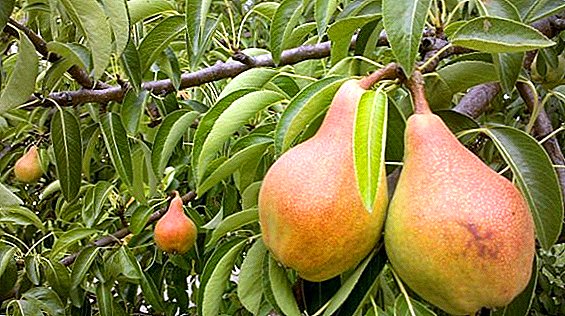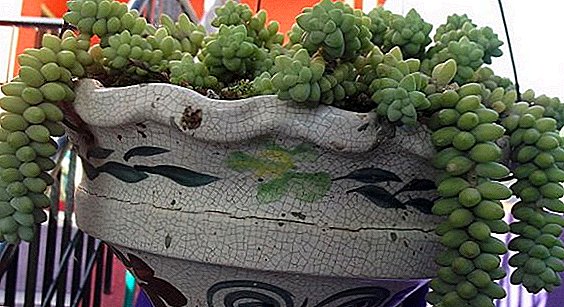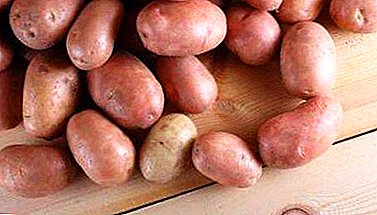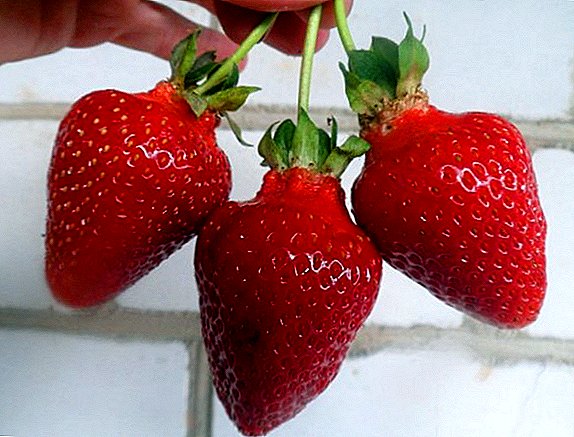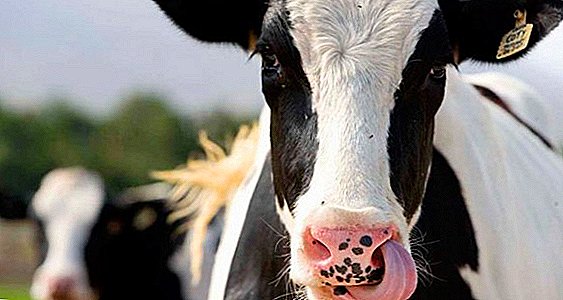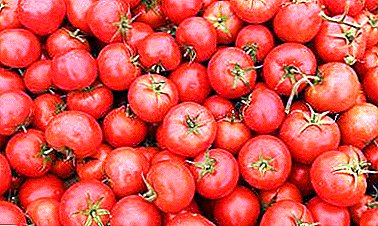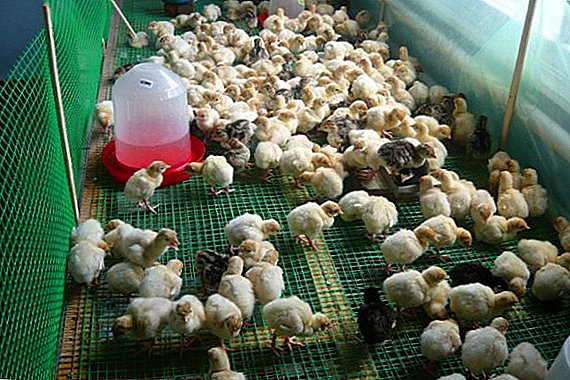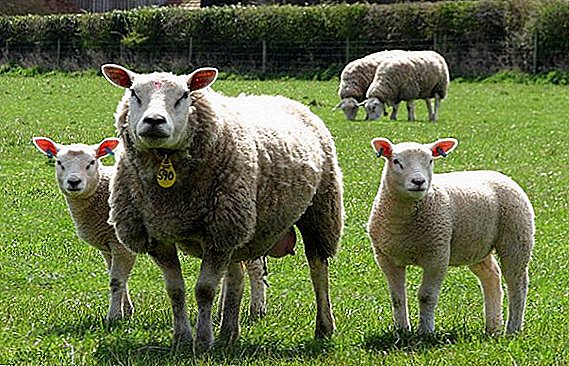 Texel sheep are considered one of the most popular types of sheep. Farmers appreciate their high quality meat and silky thick wool, as well as unpretentious care. Bred on the same Dutch island, the animals quickly spread throughout the world. We find out what other advantages this type of sheep has, whether there are features of their content, and how high the productivity of such cattle is.
Texel sheep are considered one of the most popular types of sheep. Farmers appreciate their high quality meat and silky thick wool, as well as unpretentious care. Bred on the same Dutch island, the animals quickly spread throughout the world. We find out what other advantages this type of sheep has, whether there are features of their content, and how high the productivity of such cattle is.
History of origin
Sheep Texel was first bred by the natives on the territory of Holland (Father Texel) during the time of the ancient Romans. In Europe, they appeared at the beginning of the XIX century. Thanks to the excellent taste of meat and the rapid maturing of lambs, European farmers took to raising sheep in their own countries. As a result of this selection, new species of breed appeared - French and English.  At the same time, Texel was bred in order to improve the quality of the meat: lamb was chosen with a lot of weight, but lean. After such experiments, the sheep of this breed became leaders in their class, keeping the championship to this day.
At the same time, Texel was bred in order to improve the quality of the meat: lamb was chosen with a lot of weight, but lean. After such experiments, the sheep of this breed became leaders in their class, keeping the championship to this day.
Did you know? Sheep have a different life span depending on the breed. Least of all live urials are up to 6 years, longest are bighorn sheep: 24 years.
Description and external features
Each breed of sheep has its own distinctive characteristics. No exception in this regard, and the Dutch representatives. They have a non-standard appearance and light character. 
External characteristics
- Body. Proportional, rectangular shape, medium size. There is a powerful muscular chest, a flat back and a thin lumbar part. When an animal grows up, its muscles do not change shape.
- Legs. Strong, smooth, covered with rare wool, predominantly white or beige.
- Head. On the head, the coat has a white color, sometimes black markings are found in the ear area. There is no hair on the frontal part. Individuals are horny. In some variations, small horns are possible.
- Tail. Usually it is thin, has a small size, and the more the breed changes, the shorter it becomes.
- Wool. Soft, thick, in length reaches 15 cm.
- Growth. Adult males at the withers grow up to 85 cm, females - up to 70-75 cm.

Weight data
By weight, rams significantly outnumber sheep. Mature male weighs 150-160 kg, and the female is almost two times less - up to 70-75 kg.
We advise you to read about other breeds of sheep: Kuibyshev, Gissar, Edilbaev, Romanov, Katum, merino (breed, breeding), dorper, Romney-march.
Color
All subspecies of the breed have a similar distinguishing feature: the absence of lush vegetation on the head and legs, as well as the characteristic white color of these parts of the body. Sheep Texel may have one of these colors:
- white - in most cases is considered standard;
- brown and gold;
- white and blue.
Character
In their liking, the texels are calm and docile. They easily adapt to new conditions and changes in the external environment. Animals are not conflicted and are usually friendly to other types of ungulates. Easy to get along with cows and horses. 
Classification
Exists three types of texel breed depending on the region of their breeding:
- English - is characterized by longer legs and tall (up to 87 cm);
- French - with maximum similarity with the original appearance, it is distinguished by a short period of ripening;
- Dutch - has a well-developed muscles, large size and with shorter legs.



Productivity
Texel is especially valued for wool and meat. By productivity, this type of sheep ranks first.
Wool
The quality of wool is considered one of the best. It is silky, soft to the touch and thick in appearance, can grow up to 15 cm. This effect is achieved due to the secreted subcutaneous fat, which softens the pile. Wool is used to make knitwear, stockings, socks. It is necessary to cut it at a certain time in the summer.
Did you know? One ram for trimming gives wool up to 7 kg, sheep - up to 5 kg.
Meat quality
Texel is famous for the fact that during the period of growth it quickly gains weight, which is fixed for a lifetime. As a result, about 50-60% of meat comes from one carcass. This is a fairly high percentage for this type of livestock. Due to the small fat layer, the meat portion is tender, low-calorie and soft. Prepares faster than usual and is very much appreciated by restaurateurs. It is from this breed that the excellent lamb rack comes out. 
Breeding areas
Today, breeding texels are practiced around the world. In the Netherlands, the home of these muscular sheep, the largest population is concentrated. Tourists even joke about this, saying that the number of sheep exceeds the number of inhabitants.
Large farm lands for raising such animals are located in other European countries, as well as in America, Australia, New Zealand. Texel also spread in Ukraine and Russia. But, according to experts, in these countries it is difficult to find a purebred breed, because in order to survive in the local climate, animals are crossed with other species. And this, in turn, is reflected in the quality of meat products. 
Conditions of detention
Sheep of this breed are undemanding in care and do not need special conditions of detention. They are hardy, quickly adapting to the new environment. Nevertheless, to provide even an elementary minimum, as for any other livestock, they need. Proper animal care will be the key to high productivity in the future.
Pens Requirements
The sheep house where the flock is located must always be clean. To do this, it must be constantly cleaned and ventilated. In winter, the paddock needs to be warmed so that the animals are warm, dry and comfortable.
Important! There should be no place for dampness and mold in the room. They can have a negative impact on the health of the sheep.
Grazing on pasture
On the pasture, the flock is grazed independently and does not require constant supervision. Powerful muscular animals are able to protect themselves in the event of a predator attack, so even wolves rarely attack sheep. Phlegmatic in character, texels do not tend to leave the pasture, running in different directions. 
Feed and water
The constant availability of drinking water in the sheepfold is a must. Lack of fluid in the body is bad for the health of these sheep. Food for any fit, Texel does not suffer from poor appetite and is gaining weight well, even feeding on greens on pasture.
In winter, they have enough straw and hay. You can add to the diet feed and vitamin supplements. Also suitable small branches of trees, stored in the summer.
How to endure the cold
This type of sheep easily adapts to frosty winters. Warm wool cover is an excellent protection against cold wind and snow. This makes it possible to raise animals even in harsh climatic conditions.
Check out dairy, meat, and wool sheep breeds, as well as general sheep breeding tips.
Case and breeding of young animals
Texel with its high productivity demonstrates very low fecundity. Even with additional stimulation, they do not give more than one offspring per year. 
Puberty
Females of the Dutch breed biologically mature for fertilization by 7 months. However, many experts advise not to mate them at such an early age, since this can adversely affect both the health of the sheep itself and the health of future offspring. For one lamb, the female is able to give birth from 1 to 3 lambs. With so few recommendations for later fertilization sound quite rational.
Important! The most suitable age for mating sheep is 11-12 months.
Case
The hunt for rams begins after shearing at the end of summer. It lasts 5 months from September to January. It is possible to happen earlier, but autumn is still considered a more suitable period. In this case, the younger generation will appear in the spring.
How are birth and how many lambs are born
A pregnant female several days before the onset of labor activity is recommended to be resettled in a separate pen. This will give her the opportunity to develop maternal instinct. Childbirth in females Texel is often not easy. This is due to the large head of the newborn. Therefore, on this procedure, quite often farmers invite a veterinarian, who controls the entire process.  For one lamb, up to three babies can be born.
For one lamb, up to three babies can be born.
Often, the milk that gave birth to a sheep is only enough for two young. In this case, when lambing triplets, the third lamb is given for feeding to another sheep.
Learn more about the proper care for lambs after lambing, in particular, for orphan lambs.
Care for the young
Juveniles at birth have a weight of 5-7 kg. Every day they easily gain weight: daily gain is 400-600 g. Lambs from birth quickly adapt to the environment and literally the next day they can go for a walk. Ewes in most cases independently raise offspring. 
Advantages and disadvantages of the breed
Like any animal, Texel sheep also have advantages and disadvantages. Breed Benefits:
- high meat productivity;
- high-quality soft wool;
- quick adaptation to any external conditions;
- calm friendly character;
- lack of herd instinct;
- independence;
- ability to protect oneself from a predator;
- unpretentious care.
The disadvantages of this type include:
- low fecundity;
- difficult childbirth, often fatal.
Video: Texel sheep breed
Given all the obvious advantages of the breed, it is not surprising that many farmers choose this type of sheep for breeding. With high productivity of flocks, they are ready to put up with their low productivity, because it is not easy to select a breed that is so universal and unpretentious to the breeding conditions.


